
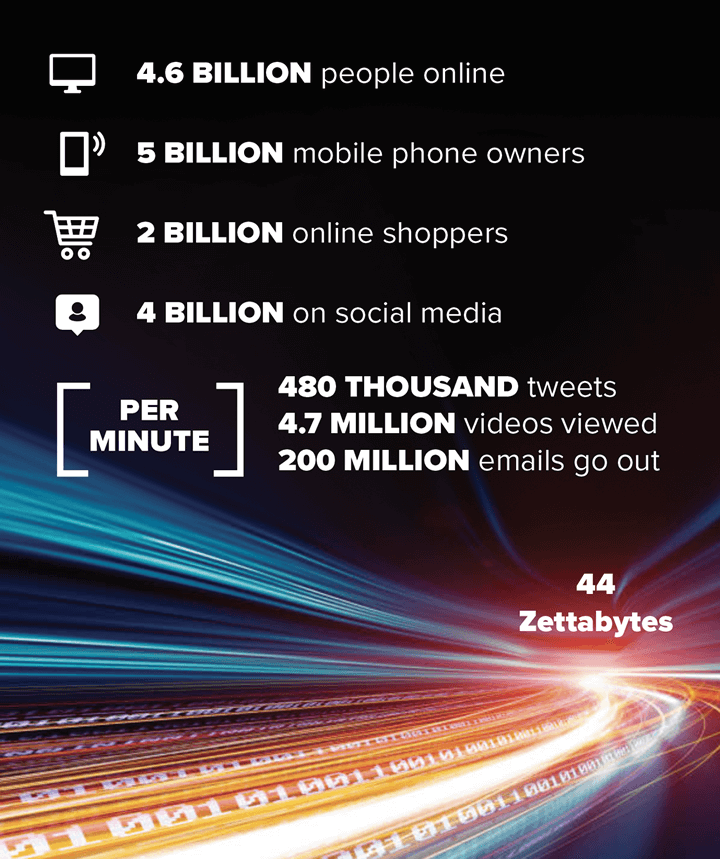
Welcome to the Datasphere
Forget about megabytes and gigabytes. It’s time to start thinking in zettabytes. Each zettabyte (ZB) equals 1021 bytes, an almost inconceivable number. If each byte measured a centimeter in length, a zettabyte would stretch one third of the way across the galaxy.
But that’s what you need to measure the dimensions of a phenomenon commonly known as the Datasphere, the sum of all the data produced annually on Planet Earth. Official estimates put its current size at an astounding 44 ZB.
Travel through the Datasphere and you’ll find about 4.6 billion people online, along with literally millions of businesses and institutions. You’ll also encounter 5 billion mobile phone owners, 2 billion online shoppers and nearly 4 billion people on social media. In just a single minute, 480K tweets go up, 4.7 million videos are viewed, and 200 million emails go out.
Even more remarkable, Datasphere is expected to expand from its current 44 ZB to 175 ZB in the just the next 5 years. An unprecedented explosion of information that makes it perhaps the most significant development in all of human history.
Ultimately, it comes down to integrated circuits
While the Internet forms the skeleton of the Datasphere, its interior is populated by a cohort of applications, hardware, and communications systems that all contribute to its frenetic pace of growth. Cloud computing, the internet of things, 5G mobile, streaming media, and artificial intelligence are just a few of the entities that produce and consume vast quantities of data on a daily basis. And the one thing they all share is a hardware base made of integrated circuits. From imaging devices in cell phones to high-speed CPUs in data centers, the Datasphere is totally dependent on advances in semiconductor technology.

In times past, the IC industry focused on a few monolithic markets, from mainframes to PCs to smartphones. No longer. The Datasphere has created a great diversity of applications, each with its own set of design and fabrication challenges.
Cell phones provide a good case in point. To take a picture and sent it to another user, an intricate combination of devices becomes involved. Image sensors, analog receiver/transmitters, memory storage, and central processing all play out in a pocket-sized, battery-powered product. On other fronts, automotive electronics and the internet of things (IOT) provide numerous examples of the demand for energy-efficient, fail-safe integrated circuits targeted at highly specialized applications.
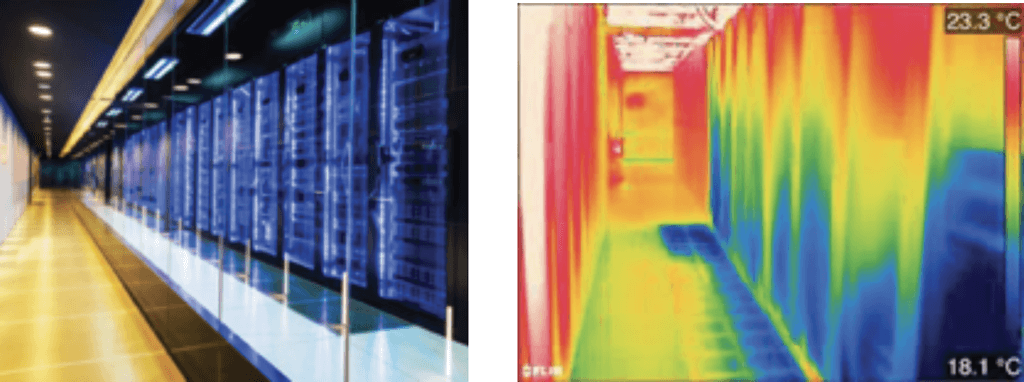
Everything comes at a price, and the Datasphere is no exception.
In this case, the price is paid in terms of energy consumption. Data centers provide the most dramatic example. Worldwide, they consumed 200 Terrawatt-hours of energy in 2018 to support the relentless surge in data traffic. In response, a new generation of hyperscale data centers has come about, with a single location housing up to 5000 servers, each assigned 100K terabytes of data storage. It’s no wonder that energy consumption is a major consideration in the design of such facilities.
In an age of mounting environmental concern, this focus on energy efficiency will only continue to grow, with the semiconductor industry bearing much of the load in resolving the issue. As always, the perennial quest for minimal energy consumption will remain inextricably linked to the demand for faster execution and minimal real estate.
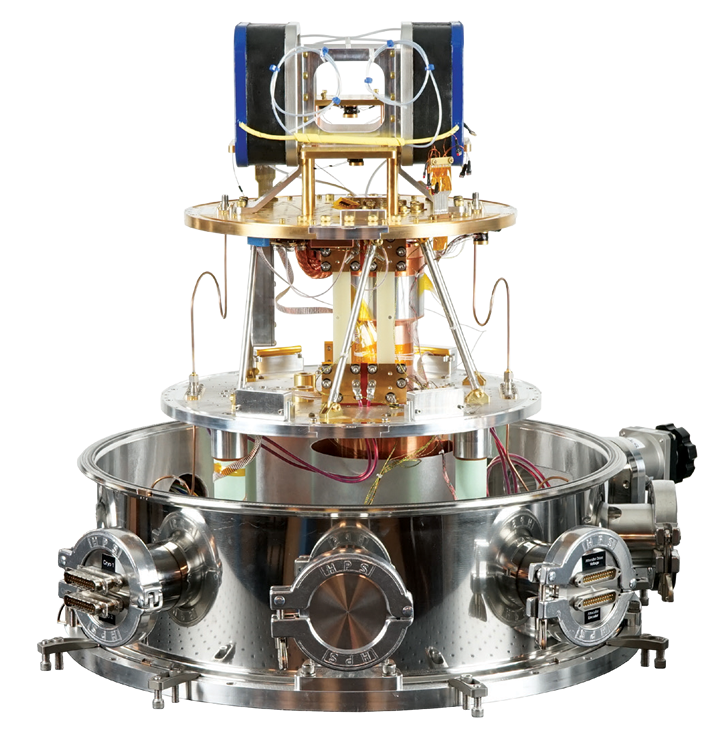
Advanced technology to the rescue.
To meet the persistent demand for high data throughput at minimum energy levels, the industry has moved aggressively to develop new technologies and refine existing ones. FormFactor is deeply involved in this process, because ultimately all such devices must be tested at the wafer level as they move from the lab to fab.
At the extreme end of the integration spectrum, you can find us actively participating in the emergence of ICs with feature sizes at the 3 nm level. They promise to combine high throughput with optimal energy efficiency in high performance settings, like AI and data centers. We’re already exploring wafer probing techniques to support this effort.
Quantum computing, once only theoretical, is moving steadily toward practical realization, especially in the field of supercomputing, where it holds the potential for drastic power reduction. Quantum devices operate at extremely low temperatures, and we’re on board with cryogenic probing systems for advanced research.
Building quicker, cooler data centers.
A technology revolution is underway in data centers around the globe as they adopt a series of innovative technologies that them make faster, cooler and more secure. Once again, FormFactor plays an active role in making this happen.
One major improvement in data center power consumption comes through the introduction of silicon photonics, which replaces long runs of copper cable with optical fibers that interface directly with silicon-based devices. They require only 2% of the power demanded by conventional cabling. We already support silicon photonic development with a highly specialized automated solution dedicated to wafer-level test of SiPh devices.
Uninterruptible power ranks as major concern in all data centers, and a new generation of Silicon Carbide based power supply backup systems offer energy savings of nearly 40% over conventional systems. Our TESLA High Power Probe Station plays a critical role in their test and development.
We also supply probe systems for the wafer-level test of the flash memory used in solid state drives (SSDs), which are rapidly replacing disk drives in server systems. They offer a 50% reduction in power consumption as well as performance gains.
For servers dedicated to AI applications, CPUs that incorporate 3D advanced packaging offer a cost-effective alternative to monolithic ICs, while also consuming less power. These new packaging schemes, such as high bandwidth memory (HBM), require wafer probing of unprecedented precision which we supply with our latest series of probe cards and stations.
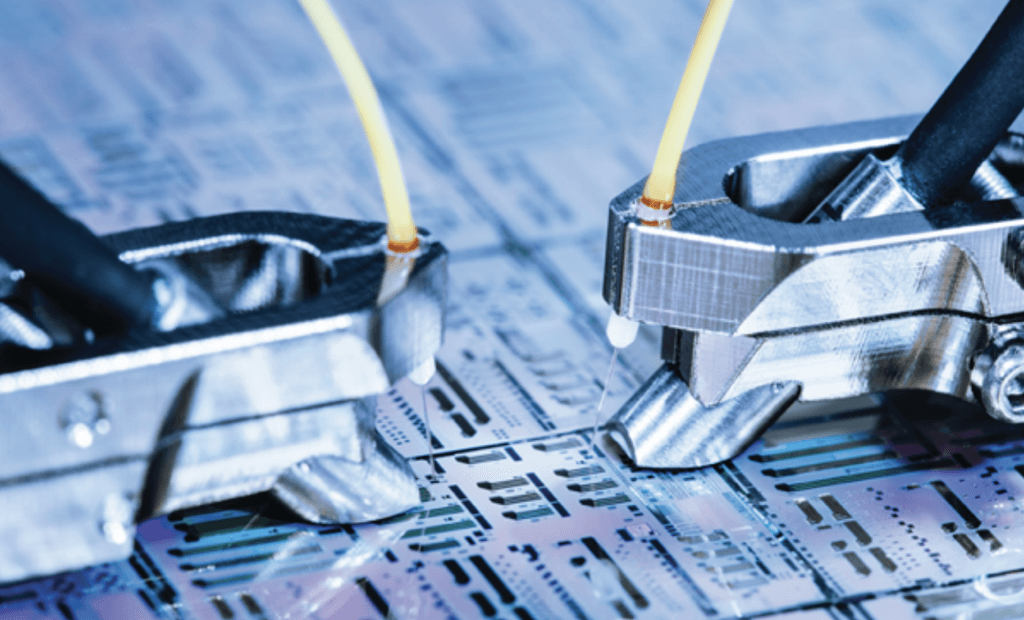
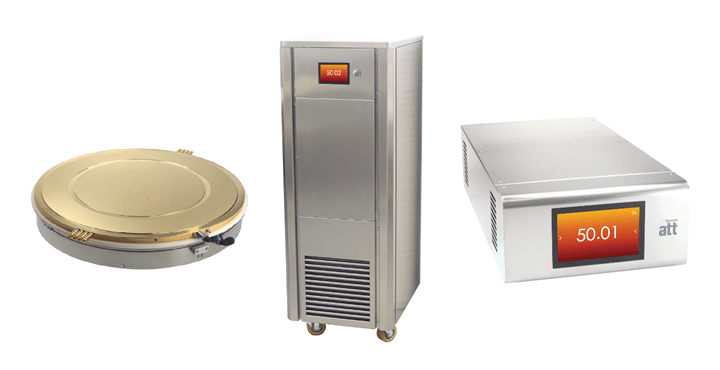
The Datasphere is where we live.
Almost anywhere you look in the Datasphere, you’ll find our footprint. From server racks to cell phones to auto navigation to communications satellites, we’re instrumental in testing the ICS that power them. And as the Datasphere continues to expand, we fully intend to expand right along with it.
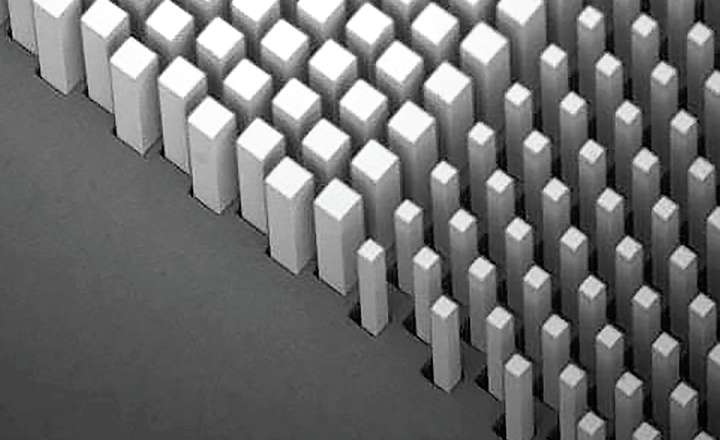
LEARN MORE